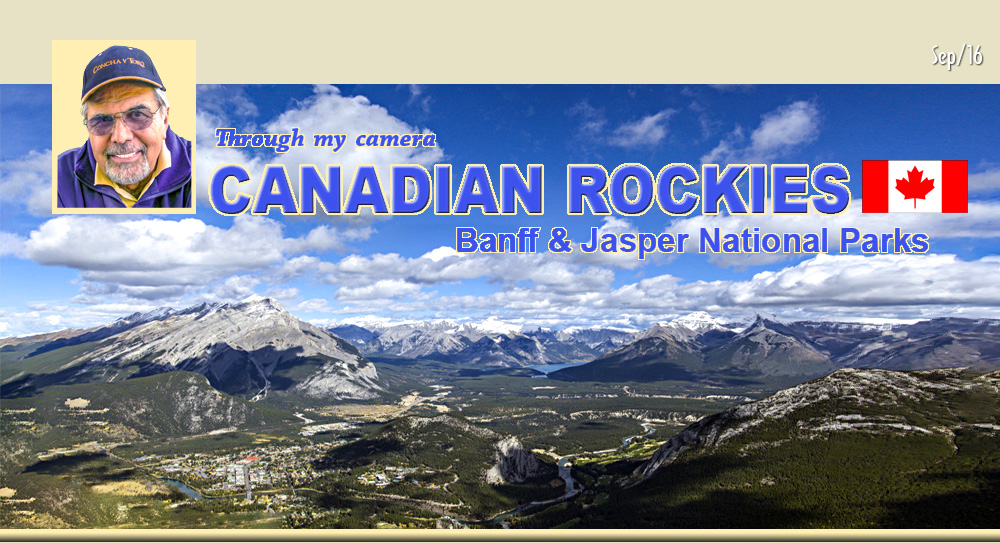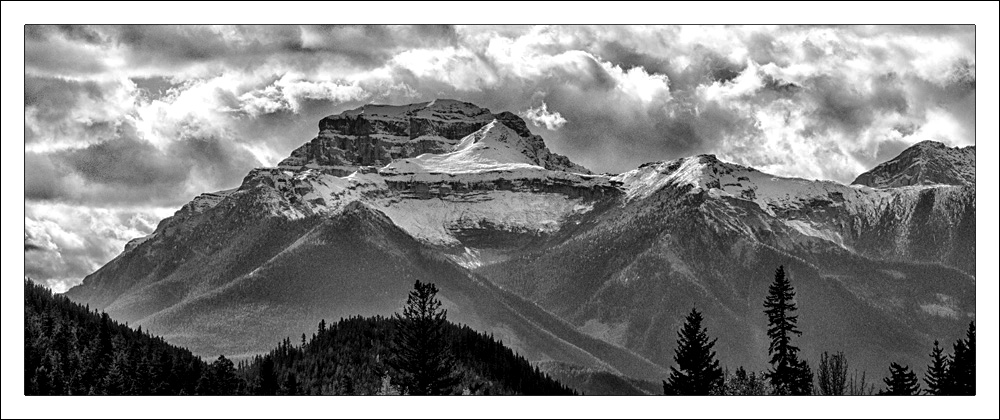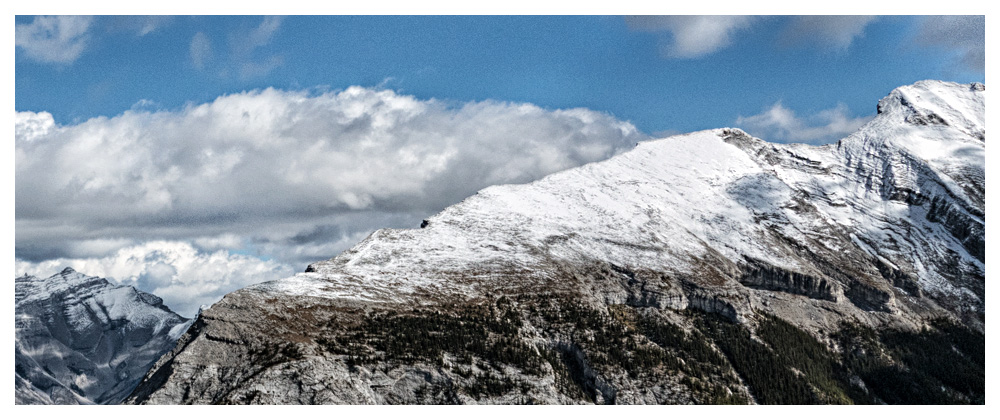|
|

The Athabasca Glacier is located in 'Jasper National
Park' in Alberta, Canada. This glacier is one of the six branches that extends from the Columbia ice field in the Canadian Rocky Mountains. The Columbia ice field is the
largest section of ice in the Canadian Rocky Mountains. The Athabasca Glacier is the most visited glacier in North America and approximately 6 km (3.7 miles)
long, covers an area of 6 km square (2.3 sq mile), and is measured to be between 90-300 meters (300-980 ft) thick. Studies indicate that the glacier currently recedes
at a rate of about 16ft (5 meters) per year and has receded more than 0.93 miles (1.5km) and lost over half of its volume in the past 125 years. To get a perspective of
the size of the Athabasca Glacier look at the bottom of the photo for the parked vehicles.
I captured this panoramic image from 'Icefield Centre', elevation 1975 meters above sea level, by three separate images and then I stitched them on my computer.
|
|
|
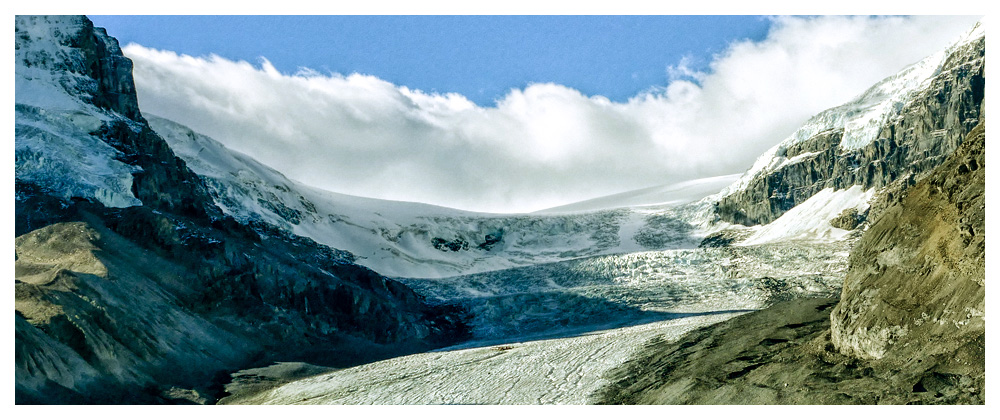
Through the centuries, changes in world climate have caused glaciers to expand and shrink as the balance between snowfall and ice melt shifts. The glacier moves down from the ice field at a rate of several centimeters per day. Around 27,000 square kilometers of Western Canada is covered by glaciers, an area similar in size to the amount of ice in the Himalayas or the whole of South America.
A Bus Company has a number of huge buses (Ice Explorers or Snow coaches), which are taking out customers onto the Athabasca Glacier where one can walk around. Tours operate from early April to mid-October.
|
|
|
|
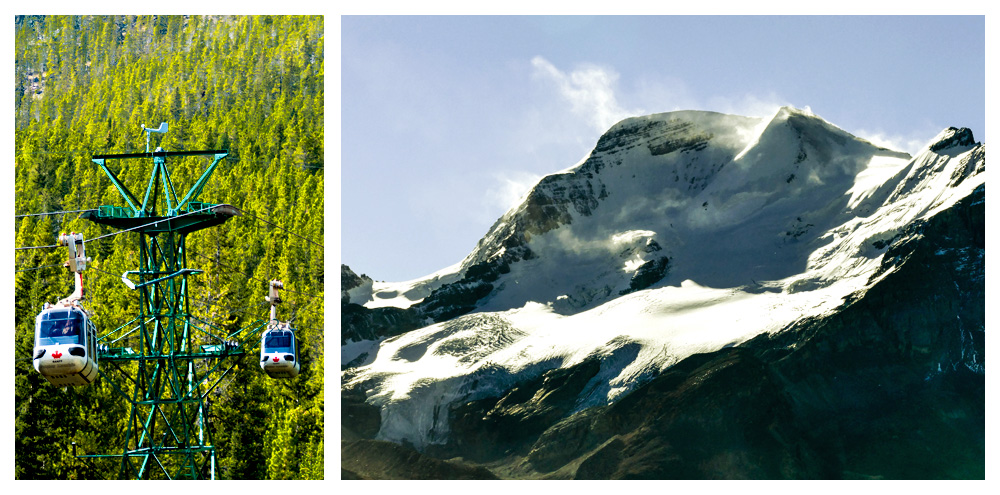
The Banff Sightseeing GONDALA (teleferic) is located just 5
minutes from the Town of Banff, on the shoulder of Sulphur Mountain, in the heart of the Canadian Rockies. No words can explain enough what you get to the top for
breathtaking views!
|
|
|
|
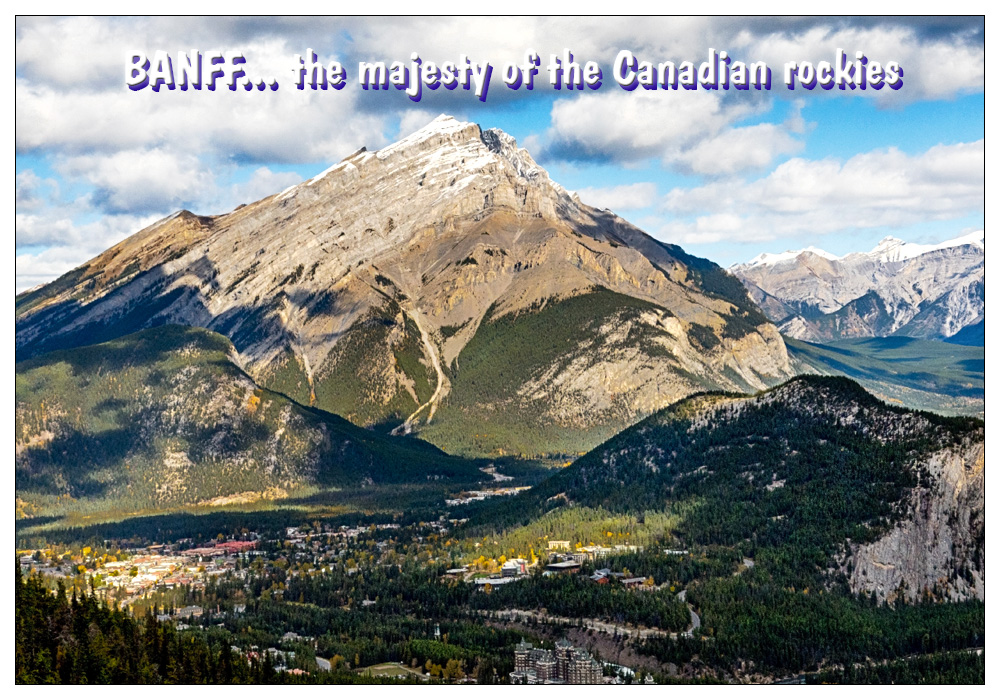
BANFF . . . the name of the national park as
well as the charming historic town that lies within it, Banff is one of the areas in Canada most frequently visited by international tourists and is home to the bright
blue Lake Louise, a glacier-fed high alpine lake. Banff has a population of 7,000 people, but sources indicate that during the peak season its population swells to over
50,000 people.
|
|
|
|

|
|
|
|
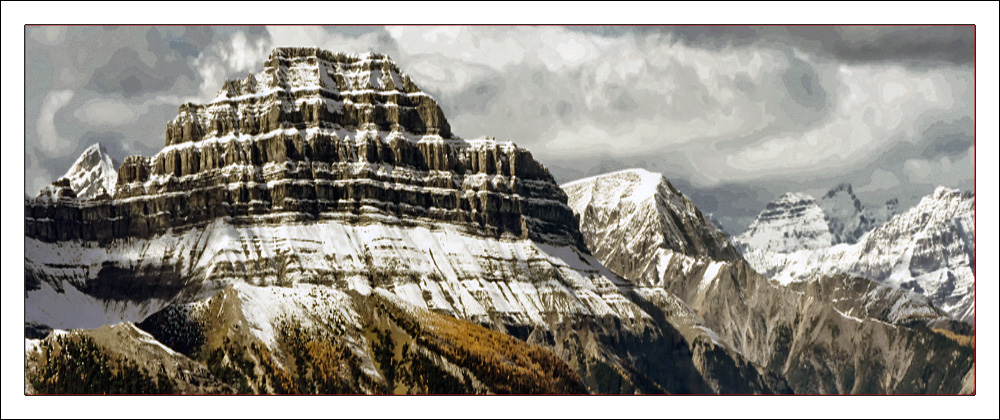
At high elevations in the Canadian Rockies, not all of the snow
that falls in winter melts in summer. Despite the strong sunlight up there, the air is so cold that at the end of August there are usually a few centimeters of snow remaining from the 5-10 m that fell the previous winter. The Canadian Rockies have over 1,000 glaciers.
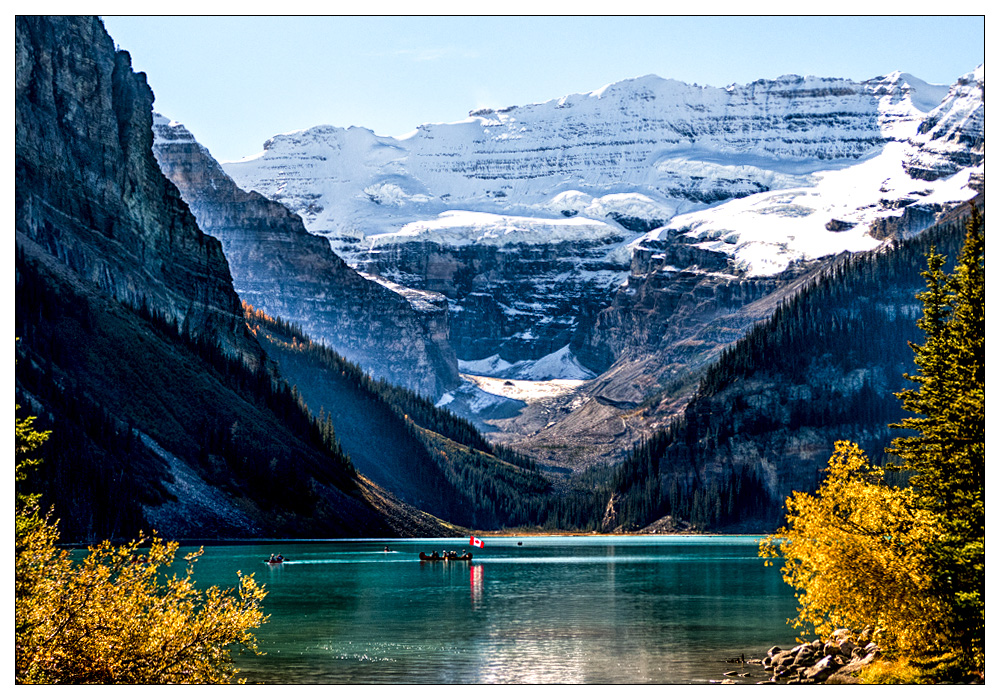
Lake Louise is world famous for its turquoise lakes surrounded by a lifetime's worth of jaw-dropping sights and adventures. During the summer the lake is an intense shade of turquoise, the result of light refracting off the “rock flour” (glacier silt) deposited in the lake by glacier run off.
|
|
|
|
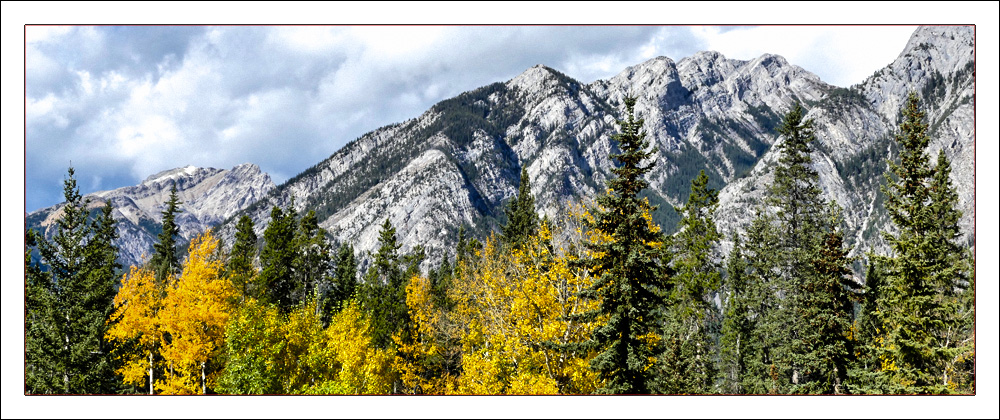
The majestic Canadian Rockies are home to Canada's best front country and backcountry hiking. The mountain trails of Banff, Lake Louise, Jasper and Canmore Kananaskis offer stunning views with incredible hiking opportunities.
|
|
|
|
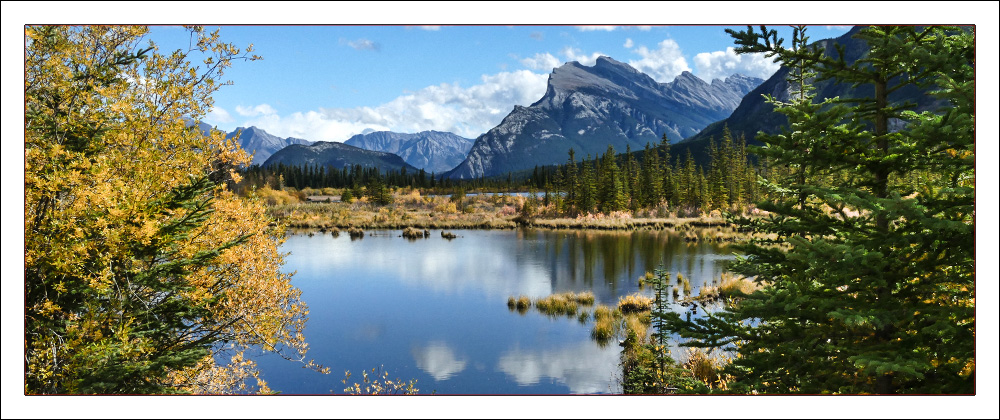
Banff National Park, one of the natural wonders of the world
and the birthplace of Canada's national park system.
|
|
|
|
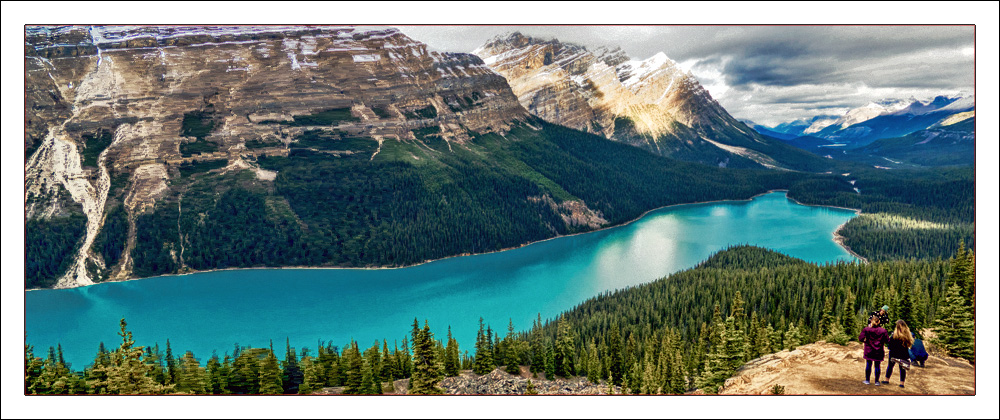
The Icefield Parkway is 140 miles (230km) long and every moment spent on it is filled with incredible mountain views, stunning glacier fed lakes, waterfalls, winding rivers and huge glaciers creeping down towards the road.
|
|
|
|

|
|
|
|

A variety of ranches around Banff & Lake Louise offer horse back
riding for all ability levels. Also during your visit to Banff, biking might be the most beautiful place you ever ride your bike.
|
|
|
|
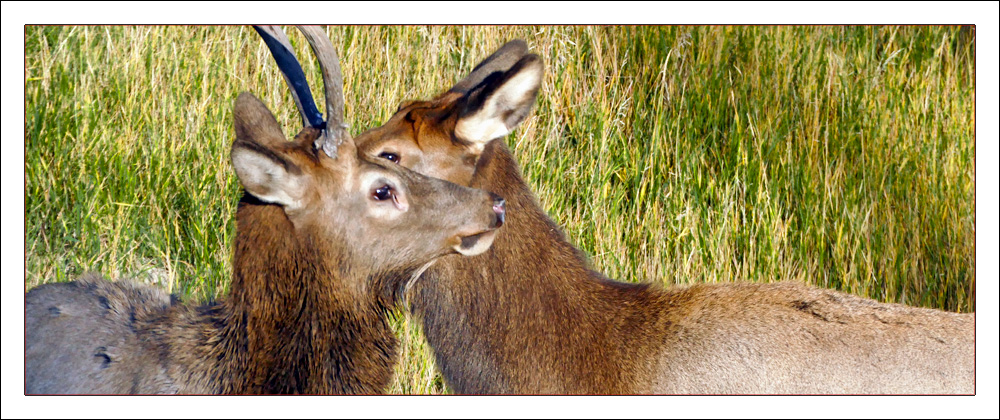
Part of the magic of visiting any national park including Rocky Mountains is that you never know when you are going to see something
stunning.
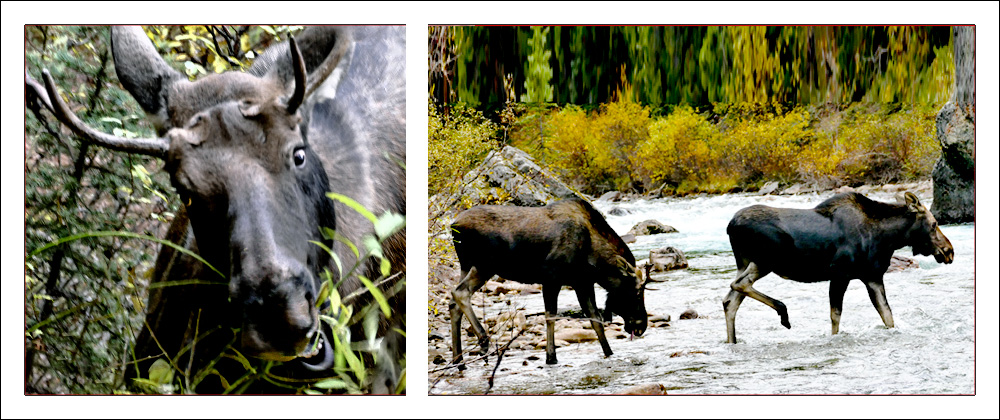
I heard that in Banff most commonly seen are elk, bighorn sheep
and deer, less frequently spotted are bear, mountain goats, coyotes, wolves and moose and rarer still are lynx, mountain lions (cougars) and wolverine. Unfortunately I
was not lucky enough to see any bears.
|
|
|
